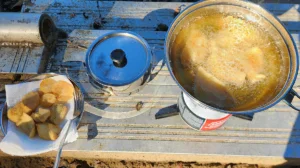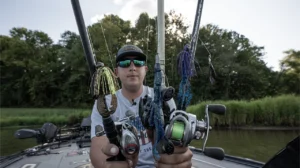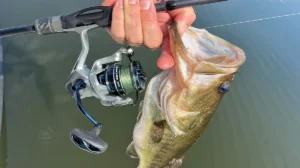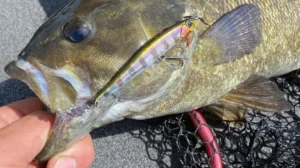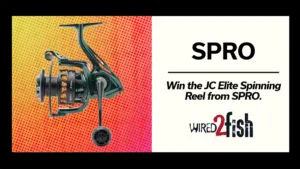Few things in the world of fishing ignite more quiet controversy than tackle choices. Spinnerbait vs. chatterbait, or the classic braid vs. fluorocarbon — anglers love to debate. But among all the techniques that have risen to mainstream popularity in recent years, there’s one that deserves to be called out for what it truly is: inefficient, unexciting, and frankly overrated. I’m talking about the drop shot rig.
Yes, I said it. The drop shot — darling of finesse anglers everywhere — is the worst way to fish. Before the purists throw their shaky heads at me, hear me out.
It’s a Time-Waster for Cover-Oriented Fishing
The drop shot is notoriously awful around anything resembling cover. Got submerged brush? Good luck. Fishing through rock piles? Kiss your weights goodbye. Unlike Texas rigs or jigs that can be pitched, flipped, or dragged through thick stuff, the drop shot is a snag magnet in all but the cleanest conditions. Its vertical, suspended design was made for open water. But in real-world scenarios — where bass actually live and ambush — you’re wasting time trying to keep that rig from tangling or snapping off.
It’s Passive to the Point of Boredom
Fishing is supposed to be engaging. With power fishing techniques like crankbaits, spinnerbaits, or even a Carolina rig, you’re actively working the bait, triggering reaction strikes. The drop shot, however, encourages the opposite. You’re holding the rod still, twitching the tip like you’re sending Morse code. The bite is subtle. The hookset is awkward. The fight? Usually anticlimactic. If I wanted to “watch paint dry, but with fluorocarbon,” I’d stay home.
It’s Overhyped Because of Tournament Culture
Let’s be honest: a huge reason the drop shot gets so much love is because of pro tournament fishing. Elite anglers use it on pressured fisheries, in 30 feet of water, with cameras in their faces and sponsorship contracts on the line. But that doesn’t mean it’s the best choice for the weekend warrior. What works in the ultra-specific environment of a smallmouth derby on Lake Erie doesn’t necessarily translate to your average Saturday morning on a muddy reservoir.
It’s a Finesse Crutch
Too often, anglers default to the drop shot when the bite gets tough. It becomes a security blanket rather than a strategic choice. But fish aren’t always uncatchable — they just need a smarter presentation. Swimbaits, jerkbaits, or even a well-worked jig can outfish a drop shot if you’re willing to put in the effort. The drop shot fosters laziness. It’s the fishing equivalent of a participation trophy: sure, you might catch something, but was it earned?
It’s Gear-Specific and Gear-Limited
Want to fish a drop shot effectively? Better bring the right gear: light-action spinning rods, high-end reels, 6- to 8-pound test fluorocarbon, and tungsten weights that cost more than your lunch. One wrong knot, and that whole setup is toast. Want to go from flipping to drop shotting? You’re swapping out rods, lines, and probably your mental state. It’s a diva rig — needy, fragile, and rarely worth the hassle.
In Conclusion: Fish Smarter, Not Slower
There’s a time and place for the drop shot. Deep, clear water. Ultra-pressured smallmouth. Maybe under a bridge in August when the bass are moody. But for the majority of anglers, in the majority of conditions, there are better tools in the tackle box.
Fishing should be about versatility, reaction, and instinct—not tip-twitching and staring at your line waiting for it to twitch back. If you’re looking to truly enjoy the pursuit and not just the numbers game, ditch the drop shot. Your sanity — and your tackle budget — will thank you.
Disagree? Good. That’s what fishing is all about. But the next time you reach for that dainty weight-and-hook rig, ask yourself: is this really fishing, or am I just going through the motions?






